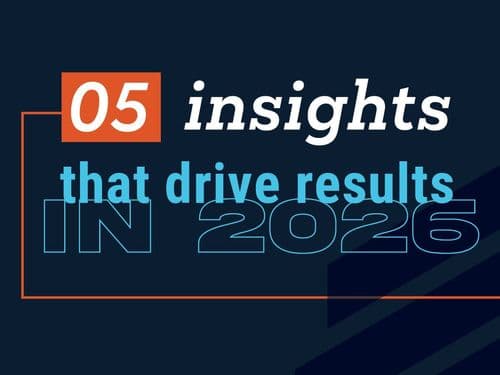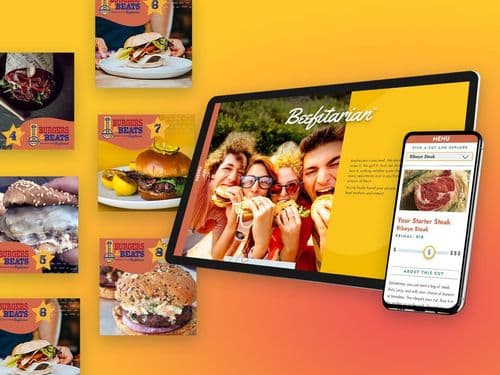From Open Mic to Headliner
There was a time when user-generated content (UGC) felt like the holy grail. Real people. Real stories. Real reach. It opened the door to more authentic, human content, and that was a big deal.
But scroll through today’s social feeds, and everything starts to blur. AI-generated posts, repurposed trends, and templated brand statements. It’s all starting to feel the same. Even the most heartfelt UGC can get lost in the noise.
So where do brands go from here? They go from the open mic to the main stage. They co-create.
The Shift from UGC to CCC
User-generated content still has its place. It’s raw, organic, and in the best cases, a genuine look at how people use your brand in real life. You can repurpose it with minimal cost. And when it hits, it really hits.
“UGC is a great way to show how real people use your products. Best case scenario for brands on social these days.” — Stormy Beauchamp, Social Media Contributor at Element
But here's the tradeoff. It’s unpredictable. Content quality varies, control is limited, and getting permission to use it can be a legal headache. It’s like an open mic night. You might discover magic, but you’ll also sit through a lot of noise.
That’s where Co-Created Content (also known as CCC) comes in. It’s not just a more polished version of UGC, it’s an entirely different mindset. One where creators and brands collaborate from the start to make something that’s both authentic and strategic.
“You work much closer with a creator, get their feedback, and shape how your brand is shared with their voice and your goals in mind.” — Stormy Beauchamp
Why CCC Will Lead in 2026
Three things are converging and fast:
- Content fatigue is real.
- Audiences crave realness—not polish-for-polish's-sake.
- AI is flooding feeds with lookalike content that lacks human nuance.
Even UGC, once the answer to brand authenticity, is losing its spark when it’s buried under a thousand stitched TikToks and “drop your fave” comment threads.
That’s why co-created content will take center stage in 2026. Because it balances authenticity with intention. It lets brands be human but still stay on brand.
“Sharing CCC helps brands create a more meaningful community where followers feel seen and put more trust into the brand.” — Stormy Beauchamp
And while CCC requires more effort—like creative briefs, contracts, and feedback loops—it pays off with higher engagement, stronger creator relationships, and content that truly connects.
How Co-Creation Works (When It Works)
CCC isn’t handing over the mic and hoping for the best. It’s building the setlist together.
That means:
- Giving creators clear direction, while respecting their voice
- Collaborating on stories that resonate with both audiences
- Listening—really listening—to what their audience cares about
- Avoiding over-scripting, so the content stays real and relatable
It’s strategy and trust. Planning and improvisation. Just like a great headliner.
What This Looks Like in the Wild
In our collaboration with LaClare Creamery and Lil Wayne, we helped orchestrate a co-created campaign that brought two seemingly unrelated brands into the same spotlight. And it worked. Why? Because it was unexpected, but intentional. Strategic, but human. That’s the power of a well-executed collaboration.

So, What Does This Mean for You?
If you're still relying on UGC as your go-to for authentic content, you're not wrong—but you might be underutilizing what your brand could really say.
Co-created content asks a different question: Who could you build with?
Not just influencers. Not just fans. But people with a voice, a vision, and an audience that overlaps meaningfully with your own.
Think beyond the obvious pairings. Some of the most effective collaborations are the ones no one saw coming.
TLDR
- UGC is still useful, but harder to control, scale, and align with strategy
- Audiences are tuning out generic content (including AI and trend-driven posts)
- CCC strikes the balance between authenticity and intentionality
- CCC is more effort but brings higher engagement, deeper trust, and long-term brand value
Not sure where to start?
Start by asking: Who’s already in your corner, and how can you build something bigger together? Because in 2026, the brands that headline won’t just talk to their audience. They’ll create with them.
Want to see how strategic brand collaborations can help you hit your business goals?
Whether you’re just starting to explore partnerships or want to fine-tune your co-creation game, we’re here to help you find opportunities that deliver real results. Let’s chat about how the right brand collaborations can boost engagement, build trust, and support what matters most for you—no matter your industry.
Note: Co-Created Content may also be referred to as Creator Generated Content (CGC)









